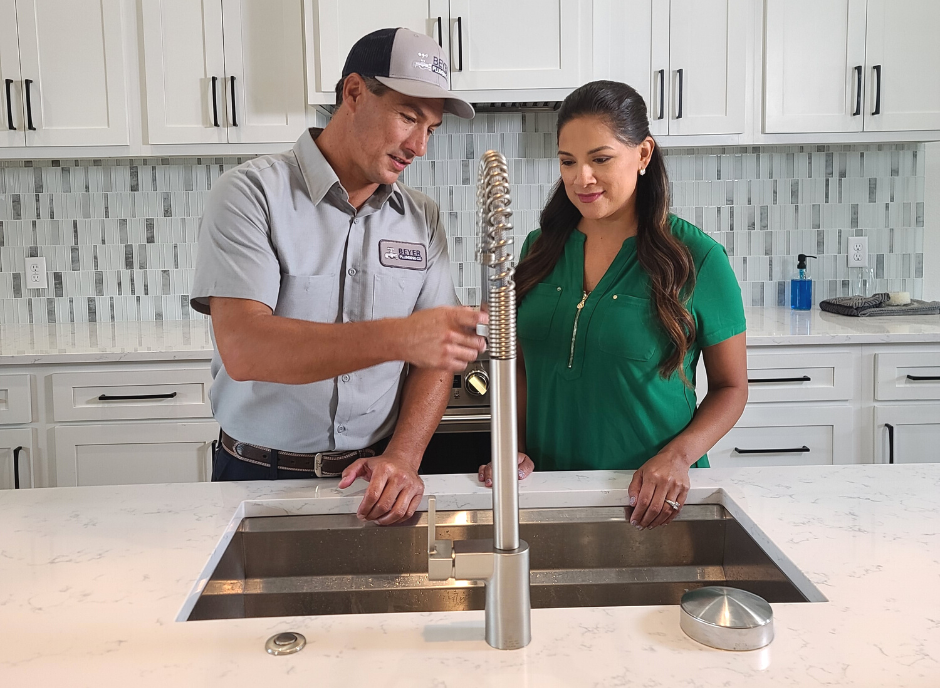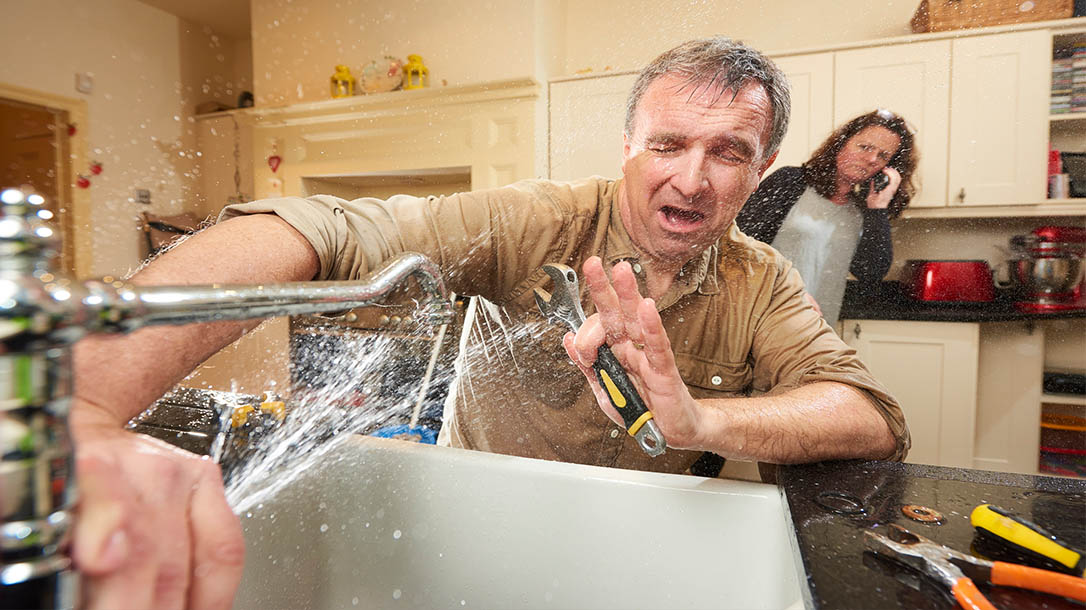Uncovering the Significance of Fixing a Dripping Faucet
Uncovering the Significance of Fixing a Dripping Faucet
Blog Article
Just about everyone will have his or her own assumption on the subject of Why Is It Important To Fix Your Leaking Tap/Faucet?.

Trickling faucets might feel like a minor hassle, however their impact surpasses just the annoyance of the sound. From drainage to incurring unneeded financial expenses and wellness risks, overlooking a leaking tap can result in numerous consequences. In this write-up, we'll delve into why it's vital to address this usual house issue quickly and successfully.
Wastage of Water
Ecological Influence
Leaking faucets contribute significantly to water wastefulness. According to the Epa (EPA), a solitary tap dripping at one drip per secondly can lose greater than 3,000 gallons of water annually. This not just pressures water sources but additionally impacts communities and wild animals dependent on them.
Financial Prices
Increased Water Expenses
Beyond the ecological influence, dripping faucets can pump up water costs substantially. The collected wastefulness over time equates right into greater utility expenditures, which could have been prevented with timely repair services.
Possible Home Damage
Additionally, long term leaking can cause damage to fixtures and surfaces surrounding the tap. Water build-up can trigger staining, corrosion, and also architectural problems if left unattended, resulting in extra repair work costs.
Wellness Worries
Mold and Mold Growth
The consistent existence of moisture from a leaking tap creates an ideal atmosphere for mold and mildew and mildew growth. These fungis not just endanger interior air quality but likewise posture health dangers, specifically for people with respiratory conditions or allergic reactions.
Waterborne Illness
Stationary water in trickling faucets can end up being a breeding place for germs and other pathogens, increasing the danger of waterborne diseases. Impurities such as Legionella bacteria grow in stationary water, possibly causing severe ailments when consumed or inhaled.
DIY vs. Specialist Repair work
Benefits and drawbacks of Do It Yourself Fixing
While some may attempt to repair a trickling faucet themselves, DIY repair work include their very own set of challenges. Without correct understanding and tools, DIY efforts can aggravate the problem or cause incomplete repairs, extending the problem.
Benefits of Hiring a Specialist Plumber
Employing a professional plumber ensures that the underlying cause of the leaking tap is addressed efficiently. Plumbing professionals have the proficiency and equipment to identify and fix faucet concerns effectively, saving time and lessening the risk of additional damages.
Step-by-Step Guide to Taking Care Of a Dripping Faucet
Devices Called for
Prior to attempting to fix a dripping tap, collect the necessary tools, including a flexible wrench, screwdrivers, substitute components (such as washing machines or cartridges), and plumber's tape.
Typical Faucet Issues and Their Solutions
Recognize the kind of faucet and the particular issue creating the drip. Typical problems consist of damaged washers, rusty shutoff seats, or damaged O-rings. Describe producer guidelines or online tutorials for detailed advice on fixings.
Safety nets
Normal Upkeep Tips
To stop trickling taps, perform regular maintenance such as cleaning aerators, examining for leakages, and replacing damaged parts without delay. Furthermore, take into consideration installing water-saving tools or upgrading to extra efficient fixtures.
Relevance of Prompt Repairs
Resolving trickling taps as quickly as they're seen avoids additional water waste and potential damage, ultimately conserving both water and money in the future.
Impact on Residential Property Worth
Understanding of Well-Maintained Building
Maintaining a residential property in good condition, including addressing maintenance concerns like dripping faucets, boosts its viewed value and value among potential buyers or lessees.
Influence on Resale Value
Properties with properly maintained plumbing components, including taps, command greater resale worths in the real estate market. Dealing with leaking taps can contribute to a favorable perception during residential or commercial property inspections and negotiations.
Environmental Obligation
Private Payment to Preservation
Taking duty for fixing dripping taps straightens with broader efforts toward water preservation and environmental sustainability. Every individual's actions collectively make a considerable effect on maintaining precious resources.
Lasting Living Practices
By prioritizing prompt repair services and embracing water-saving behaviors, individuals add to lasting living practices that benefit both present and future generations.
Conclusion
Dealing with a dripping tap exceeds plain convenience; it's an essential step toward saving water, minimizing monetary expenses, and safeguarding wellness and property. Whether via DIY repairs or specialist aid, taking action to repair leaking taps is a little yet impactful way to promote responsible stewardship of resources and add to a healthier, much more sustainable future.
Most Common Reasons for a Leaky Faucet and How to Stop the Drip
Whether it’s your kitchen faucet leaking or a bathroom faucet leaking, one leaky faucet can waste anywhere from three to 30 gallons of water every single day. If the constant drip-drip-drip doesn’t get your attention, your water bill will. The good news is that, by following a few simple steps, chances are pretty good you can fix the problem yourself.
Why is it dripping?
Before you start taking things apart, let’s break down some of the most common causes of a leaky faucet.
Bad O-ring.
A cartridge is a valve that controls the flow of water into the faucet spout. On cartridge faucets there’s an O-ring—the little disc attached to the stem screw that holds the faucet handle in place. If it’s loose or worn-out, it can cause your sink handle to leak. Of course, the cartridge itself could be worn out. If that’s the case, make sure you replace it with the exact same kind.
Corroded valve seat.
The valve seat connects the faucet and the spout. If the leak seems to be coming from the spout, it might be because a buildup of water sediment has corroded the valve seat.
Worn-out washers or seals.
A leaky spout could be caused by a bad washer that rests against the valve seat. It’s just a matter of time before friction takes its toll. It could also be the wrong size washer or one that’s been installed incorrectly. Water sediments can also corrode inlet and outlet seals.
Water pressure.
If the faucet only drips now and then, or when you turn the handles a certain way, you should probably check your home’s water pressure.
Loose or broken parts.
The adjusting ring and packing nuts in the stream screw can become loose over time, causing your sink handle to leak. Try tightening or replacing the packing nut. If the leak is coming from the pipes underneath the sink, you probably have a broken pipe or fitting. If that’s the case, you should definitely call a plumber.
Know your faucet.
Faucets come in a variety of types. Each one has its own assembly—and its own possible causes of leaks. Learning about the four most common kinds of faucets will help you know how to take them apart and make any repairs.
How to stop a leaky faucet
Fixing that leaky faucet doesn’t have to take a lot of time, money, or expertise. It’s usually a simple matter of replacing a worn-out washer or gasket, a loose O ring, or another part. Chances are really good you can do this yourself if you follow these simple steps.
Shut off the water.
Before you tackle the faucet, cut off the water supply to the sink. There should be one valve for hot and one for cold. Hand-turn them clockwise with your hands till they close. If there are no valves under the sink, head to the basement and shut off the main water supply to the house. Then turn on the faucet until it empties out the water that’s still in the line and you’re ready to start. It’s a good idea to cover the sink drain with a plug or a rag so you don’t lose any small pieces and parts while you’re working.

As an enthusiastic person who reads about What Causes Leaky Faucets & How To Fix Them, I assumed sharing that short article was a great idea. Are you aware of somebody who is fascinated by the niche? Feel free to promote it. Thank you for being here. Please pay a visit to our site back soon.
Report this page